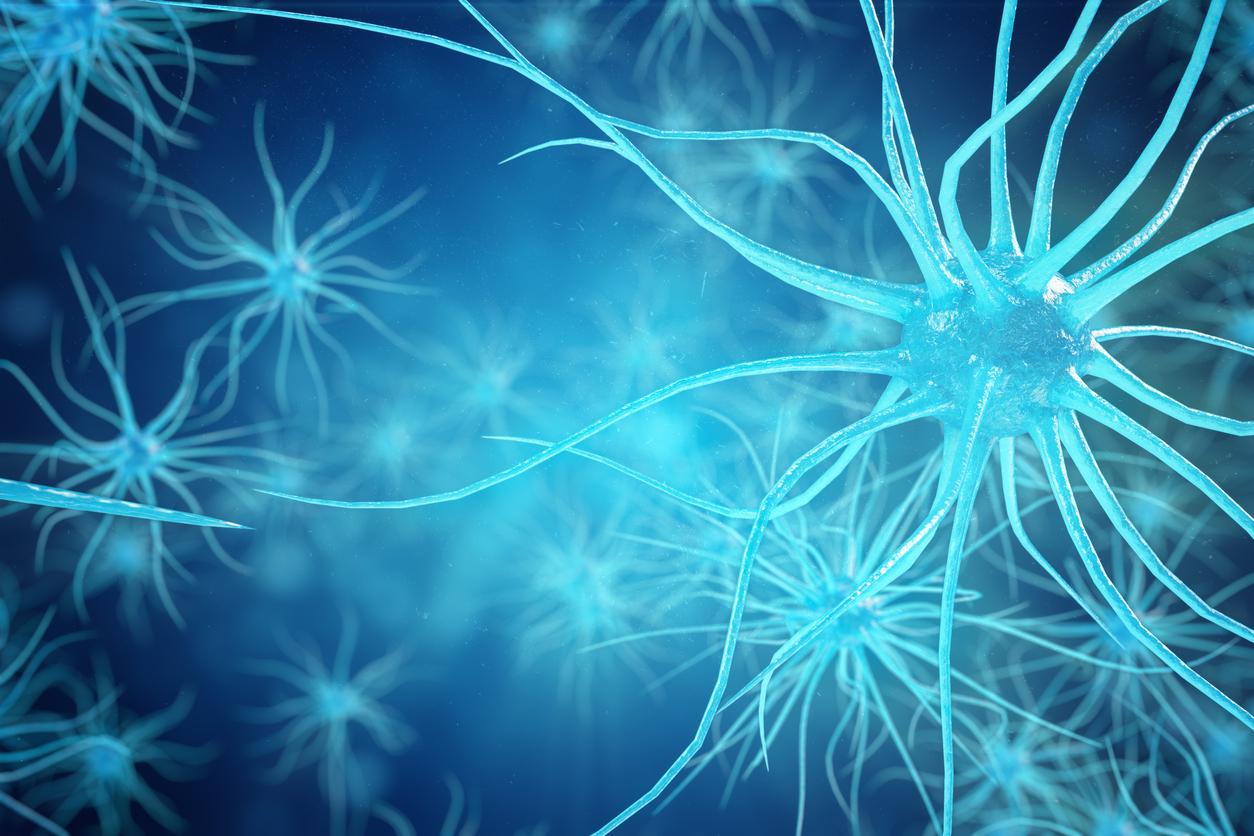An American study recently suggested that an ancient protein, called PEG10, may be a specific hallmark of amyotrophic lateral sclerosis.

- Also called Charcot’s disease, amyotrophic lateral sclerosis results in progressive paralysis of the muscles involved in voluntary motricity.
- American researchers have discovered an ancient protein, which may be involved in amyotrophic lateral sclerosis.
- In the eyes of scientists, the accumulation of this protein is a specific characteristic of Charcot’s disease.
Amyotrophic lateral sclerosis or Charcot’s disease is a serious degenerative pathology, which is characterized by progressive paralysis of the muscles involved in voluntary motricity. For the time being, there is no curative treatment, but certain medications can moderately slow down its development.
An ancient protein implicated in Charcot’s disease
Researchers from the University of Colorado-Bouder (USA) have recently discovered that an ancient protein may play a role in the progression of amyotrophic lateral sclerosis. “Our work suggests that when this strange protein, known as PEG10, is present at high levels in nerve tissue, it alters cell behavior in ways that contribute to Charcot’s disease”, said Alexandra Whiteley, lead author of the study and assistant professor in the department of biochemistry at the University of Colorado-Bouder. Their work has been published in the journal eLife.
According to previous research, the PEG10 protein would have participated in particular in the development of the placenta in mammals. However, it can fuel certain diseases such as cancers or Angelman syndrome, a neurological disorder when it is too abundant in certain areas of the body.
“It appears that PEG10 accumulation is a hallmark of amyotrophic lateral sclerosis”
During the research, the American team identified the proteins that accumulate during a mutation of the UBQLN2 gene, which is involved in the progression of amyotrophic lateral sclerosis. Of thousands of possible proteins, PEG10 topped the list.
In a second time, scientists took spinal tissue from deceased patients who had Charcot’s disease. They then analyzed the proteins to determine which appeared to be overexpressed. Among more than 7,000 possible proteins, PEG10 was among the top five.
American scientists have therefore found that PEG10 is present in large quantities in the tissues of the spinal cord of patients with Charcot’s disease, where it would prevent brain and nerve cells from communicating. “It appears that PEG10 accumulation is a hallmark of amyotrophic lateral sclerosis”, explained Alexandra Whiteley. Before adding: “The fact that PEG10 likely contributes to this disease means we may have a new target to treat Charcot’s disease.”

















